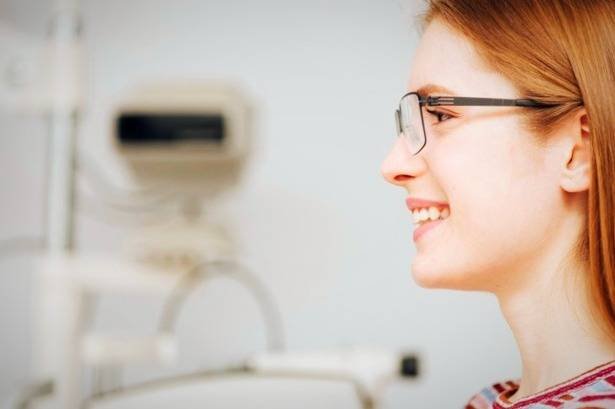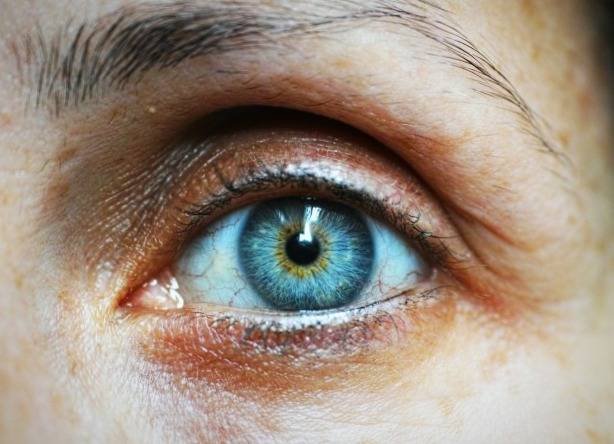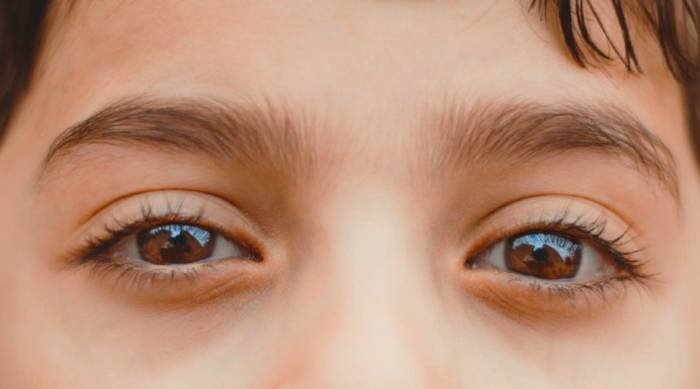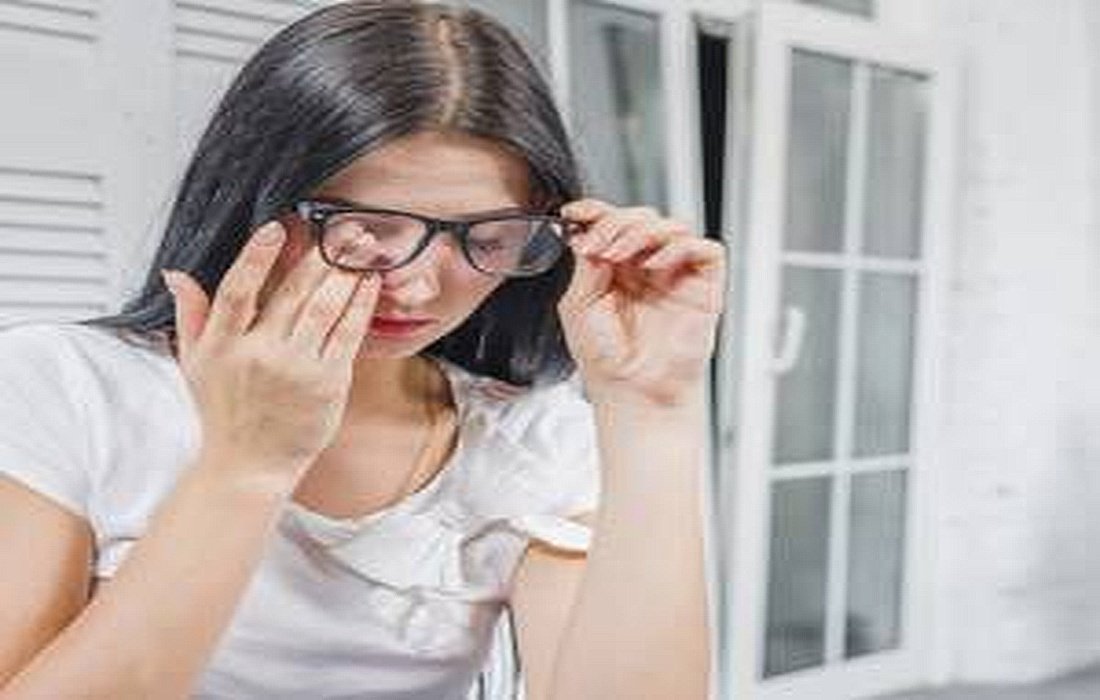How can we examine our eyes at home?
Eye examinations are essential to ensure the health of your eyes and to help prevent vision damage. There are other ways too.Eye inspectionOne common method is visiting an eye doctor or optometrist, but there may also be ways to check your eyes at home. However, as we mentioned in the health section of SelMagz, these checks are not considered precise assessments and won’t prevent eye diseases; they can only give a rough idea of your eye condition.SelMagzAs stated in our health section, these examinations provide no accurate evaluations and won’t prevent eye diseases, but they can somewhat indicate your eye status.
Ways to examine your eyes at home
1. Ishihara Eye Test
This eye examination is named after a Japanese doctor who, back in 1917, was able to diagnose many conditions using this method. It’s a color perception test that is very accurate and effective, able to detect color vision deficiencies. The dots in this image come in random colors and different sizes.
2. Online Eye Test
If you’re traveling and forgot your glasses at the beach, use this online test and get new glasses. This online eye examination is suitable when you don’t have access to an eye specialist, saving both money and time. However, it might have some inaccuracies; therefore, visit a specialist when you return home.
3. Snellen Chart
In this case, a visual chart will be provided. This chart was developed by the National Eye Institute in Australia and will give you an accurate indication of your eye status based on eye examination standards. You can hang this chart on a wall and stand 20 feet away. Typically, you are asked to cover one eye and read the letters.
4. Visual Acuity Test
Many online tests are available on computers and mobile phones, offering a wide range of options for users. Challenges like difficulty focusing on nearby objects or sensitivity to light may cause some errors in the examinations, but this test is designed to minimize such errors. We recommend installing the Essilor app on your phone to perform various eye tests.
5. Depth Perception Test
Depth perception is the ability of the eye to see the world in three dimensions and helps determine the distance to objects for better vision. Depth perception can be tested by holding a finger in front of a circle. First, focus on the circle until your finger appears blurry, then focus on your finger. When you see your finger clearly and the circles look like two green circles, you can test the other eye.
6. Astigmatism Test
Astigmatism is a common vision condition that alters the curvature of the cornea or lens of the eye, causing blurry vision. An astigmatic eye struggles to focus, resulting in distant points appearing unclear.Eye astigmatism testing can be done at home by looking at an image through your specific glasses or lenses. You should cover one eye, stand about 35 centimeters away from the computer, and look at lines, then perform the same with the other eye. If the lines appear sharp and dark, it means you’re not astigmatic. If some lines appear sharper than others and sometimes seem blurry, you should see a doctor.7. Blind Spot Test
Everyone has a blind spot. The human eye has limitations in areas where the optic nerves meet, leading to a dark, blind spot that you can notice while looking around. To find your blind spot, cover your left eye and look at a point on the left. You may notice another mark gradually fading, and then do the same for your right eye. If the spot fades for you, you likely have a blind spot.
8. Eye Exercises
There are many ways to strengthen your eyes and vision without needing equipment. Various exercises are available that can enhance your eyesight in about 5 minutes a day. One of the simplest exercises is rubbing your eyes with the palms of your hands to generate warmth and retain it for about 10 seconds.
9. Macular Degeneration
Macular degeneration is one vision problem affecting over 10 million people. The center of the cornea is called the macula, which helps you see details better; hence it is essential for reading, driving, and more. When the macula is damaged, blurriness increases.
10. Watching Movies
No matter if you’re watching a movie at home or in a theater. When you watch a movie, you can test your eyesight in the dark. It’s better to dim the lights. You should see if you can view rooms clearly in such lighting. After turning on the lights, you should do this again. If it takes longer than a minute for your eyes to adjust to the normal light, it means you might have amblyopia and you may suffer fromvitamin deficiencyUnderstanding Eye Problems
Diagnosing Hyperopia
Many of us are born with varying degrees of hyperopia that usually gets corrected as we grow. If this correction doesn’t happen, a person sees distant objects clearly but struggles with nearby ones. This condition has a genetic component. During reading, the individual may experienceheadachesand blurred vision. Treatment involves using glasses, contact lenses, or surgery. Children with this condition often become strabismic and find reading more difficult.
Diagnosis
Diagnosing Myopia
In myopia, individuals see distant objects as blurred and unclear. Family history, extensive reading, or using a computer at a close distance can contribute to this eye issue. In this situation, individuals may face problems while driving, struggle to excel in sports, and have difficulty watching television, leading to symptoms like headaches, fatigue, and sometimesdizzinessThey may experience. Treatment can involve glasses, contact lenses, or surgery. This condition is common among school-aged children, who might need regular updates of their glasses during growth.
Diagnosis of PresbyopiaYour eyes age too, which may lead to difficulty in recognizing details. This condition starts in the late 40s when the eye’s lenses lose their usual flexibility, making precise adjustments for focus challenging. Reading glasses or bifocals can be effective in treating this issue.
Diagnosis of Age-Related Macular Degeneration (AMD)AMD, or age-related macular degeneration, is a disease where the central retina known as the macula deteriorates. This condition occurs in two forms: dry and wet, and in both cases, the individual’s central vision eventually diminishes.In this disease, central vision is reduced or lost and presents challenges for reading or driving. Symptoms of this disease include unclear spots in the center of the vision field and blurry lines appearing in one’s field of view. Early detection and treatment are crucial for improved outcomes. Risks for this condition include being over 60 years old, smoking, high

blood pressure
, obesity, and a family history of the disease.
To diagnose AMD, cover one eye and look at the center of a shape from a distance of 30 to 40 centimeters. If you wear glasses, cover the lens. If you see wavy, broken, or blurry lines or dark spots, you may have this condition. Perform the same test with the other eye. An individual with this condition sees the image as crooked and distorted, and may also observe a dark spot in the center, along with lines that appear blurry, which are typically early signs of the wet form of the disease.
Diagnosing
GlaucomaThe gradual increase in eye pressure in glaucoma leads to the loss of vision. This condition typically doesn’t present symptoms until peripheral vision is compromised. Those with a family history of the condition and individuals over 60 years old are at higher risk for glaucoma. Treatment can involve medication or surgery. If you’re over 40, it’s essential to get your eyes examined annually. The increase in fluid production within the eyeball is one of the most common causes of this condition, putting pressure on the optic nerve at the back of the eye. This nerve is made up of a million fibers that carry visual information from the eye to the brain. Without treatment, complete blindness can occur.Diagnosis
Cataracts

As people age, many develop cataracts or clouding of the lens. In this condition, a layer of haze obstructs vision, making it challenging to read, drive, or see at night. Factors contributing to this condition include:diabetes
, smoking, or prolonged sun exposure. Surgery to replace the cloudy lens with an artificial one is a common treatment for cataracts.
Diagnosing AmblyopiaIn amblyopia, when vision in one eye decreases, the brain compensates by focusing on the other eye. This condition can occur due to the eyes’ misalignment (strabismus) or weakness in one eye. Placing a dark patch or glasses over the healthy eye encourages the brain to use the affected eye. If untreated, amblyopia may cause one eye to lose its function permanently in adulthood.
Individuals who should avoid eye surgery:For treating some eye issues, prescribing glasses, lenses, or surgery can be effective in correcting conditions like myopia, hyperopia, orastigmatism
However, some individuals cannot resolve their vision problems through surgery. People suffering from severe
dry eyes

, thin cornea, or other severe vision issues should avoid surgery.
Methods for Eye ProtectionConsuming healthy foodsEatingcarrotsand
other foods
rich in vitamins, particularly
vitamin Ais highly effective forstrengthening the eyesand improving vision. Spinach,oranges, meat, fish, and grains are also beneficial for eye health. To maintain a healthy diet for your eyes, consume foods rich in antioxidants, such asomega-3, vitamins C and E, beta-carotene, zinc, and lutein. Eating these foods may delay vision deterioration and reduce the risk of macular degeneration.WearingsunglassesJust as we use sunscreen to protect our skin from the sun, it’s essential to protect our eyes from sunlight, especially on sunny days, by wearing sunglasses and taking care of our eyesight.Avoiding eye strain and fatigueEye fatigue and long hours on the computer negatively impact vision, leading to issues like eye pain, tearing, blurriness, double vision, and headaches.
Regular eye examinationsEveryone should undergo eye examinations every six months to quickly detect conditions like age-related spots,
glaucoma, diabetic retinopathy, and cataracts for appropriate treatment.Eye protection
Environmental injuries negatively affect eyes and vision, so if you have a high-risk job, it’s best to wear safety glasses.How to examine your eyes
Eye examination
Eye checks
How to check eyesEye protectionEye exams
Eye problems
Eye protection







